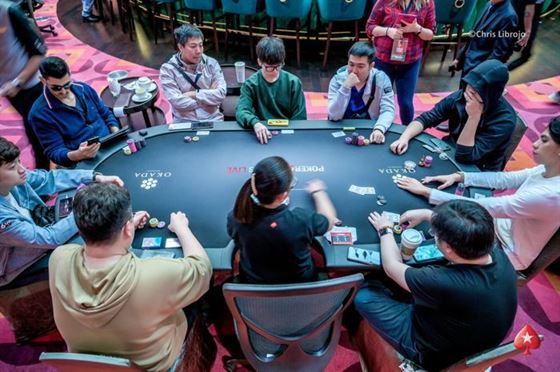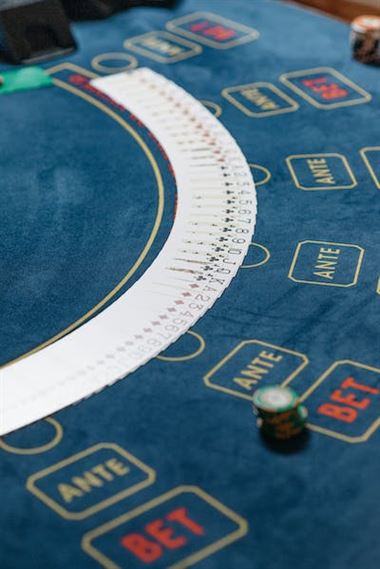Poker tournament structures refer to the various formats and schedules used in organizing poker tournaments. These structures determine the length, blind levels, starting chip stacks, and payout structures of the events. Choosing the right tournament structure is crucial for players as it can greatly impact their playing style, strategy, and overall success in the tournament. By understanding the different tournament structures available, players can select events that align with their preferences and maximize their chances of achieving their desired outcomes.
The Importance of Understanding Different Poker Tournament Structures
One of the most important aspects of poker tournament structures is the blind structure. The blind structure determines how the blinds increase over time, which directly affects the pace and dynamics of the game. In a fast-paced tournament with rapidly increasing blinds, players are forced to make quick decisions and take more risks. On the other hand, a slow-paced tournament with gradual blind increases allows for more strategic play and careful decision-making.
Another factor to consider is the starting chip stack. The starting chip stack determines the amount of chips each player begins with, and it can greatly impact your strategy and overall gameplay. A larger chip stack gives you more room to maneuver and make calculated moves, while a smaller chip stack requires a more aggressive approach in order to accumulate chips and stay in the game.
The length of the levels is also an important consideration. The length of each level determines how long players have to make their decisions before the blinds increase. Shorter levels result in faster gameplay and more pressure on players to act quickly. Longer levels, on the other hand, allow for more time to analyze the situation and make informed decisions.
Additionally, the payout structure of a tournament is a crucial factor to consider. The payout structure determines how the prize pool is distributed among the top finishers. Some tournaments have a top-heavy payout structure, where the majority of the prize money goes to the winner, while others have a flatter structure, where a larger number of players receive a portion of the prize pool. Choosing a tournament with a payout structure that aligns with your goals and preferences is essential.
Furthermore, the number of players in a tournament can greatly impact your chances of success. In smaller tournaments with fewer players, the competition may be less fierce, but the prize pool is also likely to be smaller. On the other hand, larger tournaments with more players offer the potential for bigger payouts, but the competition is much tougher. Finding the right balance between the number of players and the potential prize pool is key.
Lastly, it is important to consider the format of the tournament. There are various formats to choose from, including freezeouts, rebuys, and satellites. Freezeout tournaments are the most common format, where players are eliminated once they run out of chips. Rebuy tournaments allow players to buy more chips if they bust out, giving them a second chance to stay in the game. Satellites are tournaments that offer entry into larger, more prestigious events. Each format has its own unique characteristics and strategies, so choosing the right one for your style is crucial.
How to Choose the Right Poker Tournament Structure for Your Playing Style
One of the most common tournament structures is the freezeout. In a freezeout tournament, players start with a set number of chips and play until they run out. Once a player loses all their chips, they are eliminated from the tournament. This structure is great for players who prefer a more aggressive style of play, as there is no opportunity to rebuy or add-on chips. It requires players to make strategic decisions and manage their chip stack effectively.
Another popular tournament structure is the rebuy. In a rebuy tournament, players have the option to rebuy chips if they run out. This allows players to continue playing even if they have a bad run of cards early on. Rebuy tournaments are ideal for players who prefer a more conservative style of play, as they can afford to take more risks knowing they have the option to rebuy. However, it is important to note that rebuy tournaments can become quite expensive if players choose to rebuy multiple times.
For players who enjoy a mix of both aggressive and conservative play, the add-on tournament structure may be the best choice. In an add-on tournament, players have the option to add-on additional chips at a specific point in the tournament. This allows players to increase their chip stack and continue playing without having to rebuy. Add-on tournaments provide players with the flexibility to adjust their strategy based on their chip stack and the stage of the tournament.
In addition to these structures, there are also variations such as the shootout and the bounty tournaments. Shootout tournaments are structured in a way that players must win their table before advancing to the next round. This format requires players to adapt their strategy to the specific table they are playing at, as each table can have a different dynamic. Bounty tournaments, on the other hand, offer players the opportunity to win additional prizes for eliminating other players. This structure adds an extra layer of excitement and strategy to the game, as players must decide whether to focus on eliminating opponents or preserving their chip stack.
When choosing the right tournament structure for your playing style, it is important to consider your strengths and weaknesses as a player. If you are confident in your ability to make strategic decisions and manage your chip stack effectively, a freezeout tournament may be the best choice. If you prefer a more conservative approach and want the option to rebuy, a rebuy tournament may be more suitable. For players who enjoy flexibility and adaptability, an add-on tournament may be the ideal option.
Exploring the Pros and Cons of Various Poker Tournament Structures
One of the most common tournament structures is the freezeout format. In a freezeout tournament, players start with a fixed number of chips and play until they run out. Once a player loses all their chips, they are eliminated from the tournament. The last player standing is declared the winner. The freezeout structure is popular because it rewards skill and strategy. Players must carefully manage their chips and make calculated decisions to survive and advance in the tournament.
Another popular tournament structure is the rebuy format. In a rebuy tournament, players have the option to buy more chips if they bust out early. This allows players to continue playing even after losing all their chips. Rebuy tournaments can be advantageous for players who are willing to take risks and have a larger bankroll. However, they can also be more unpredictable, as players who rebuy multiple times may have a significant chip advantage over those who do not.
A variation of the rebuy format is the add-on tournament structure. In an add-on tournament, players have the option to purchase additional chips at a specific point in the tournament, regardless of their chip stack. This allows players to boost their chip count and stay competitive. Add-on tournaments can be appealing to players who want to increase their chances of success without the risk associated with rebuying multiple times. However, it is important to consider the cost of the add-on and whether it is worth the investment.
The shootout tournament structure is another popular choice among poker players. In a shootout tournament, players compete at individual tables until only one player remains at each table. The winners from each table then advance to the next round, where the process is repeated until a final table is reached. Shootout tournaments require a different strategy compared to other structures, as players must focus on winning their table before thinking about the next round. This format can be challenging but rewarding for players who excel in one-on-one situations.
Lastly, we have the satellite tournament structure. Satellites are tournaments that offer players the opportunity to win a seat in a larger, more prestigious event. These tournaments are often more affordable than the main event and attract a wide range of players. Satellites can be a great way for recreational players to experience the excitement of a major tournament without breaking the bank. However, it is important to note that the competition in satellite tournaments can be fierce, as players are highly motivated to win a seat in the main event.
Strategies for Success in Different Poker Tournament Structures
One of the most common tournament structures is the freezeout. In a freezeout tournament, players start with a fixed number of chips and play until they run out. Once a player loses all their chips, they are eliminated from the tournament. This structure requires a more conservative approach, as there is no opportunity to rebuy or add-on chips. It is crucial to manage your stack effectively and make calculated decisions to stay in the game.
Another popular structure is the rebuy tournament. In a rebuy tournament, players have the option to rebuy chips if they bust out within a certain time frame. This structure allows for more aggressive play, as players can take more risks knowing they have the option to buy back in. It is important to take advantage of the rebuy period and accumulate as many chips as possible to give yourself a strong position for the later stages of the tournament.
For those seeking a more fast-paced and intense experience, the turbo tournament structure is a great choice. In a turbo tournament, the blinds increase at a much faster rate compared to other structures. This means that players have less time to make decisions and build their stacks. In this format, it is crucial to be aggressive and take advantage of opportunities to accumulate chips early on. Playing tight and waiting for premium hands may not be as effective in a turbo tournament, as the blinds can quickly eat away at your stack.
If you prefer a longer and more strategic game, the deep stack tournament structure is worth considering. In a deep stack tournament, players start with a larger number of chips compared to other structures. This allows for more post-flop play and gives players more room to maneuver. In this format, it is important to be patient and wait for strong hands to make big moves. Building a solid chip stack early on can give you a significant advantage as the tournament progresses.
Lastly, the shootout tournament structure offers a unique challenge. In a shootout tournament, players must win their table to advance to the next round. This format requires a different approach, as you are not only competing against the entire field but also against the players at your table. It is important to adapt your strategy based on the playing styles of your opponents and make adjustments accordingly. Playing tight and aggressive can be effective in shootout tournaments, as it allows you to accumulate chips and put pressure on your opponents.
Analyzing the Impact of Poker Tournament Structures on Player Experience
One of the most common tournament structures is the freezeout format. In a freezeout tournament, players start with a set number of chips, and once they run out, they are eliminated from the tournament. This structure is often preferred by players who enjoy a more conservative approach to the game. It rewards patience and careful decision-making, as players cannot simply buy back into the tournament if they make a costly mistake. Freezeout tournaments also tend to have a slower pace, allowing players to think through their moves and make more calculated decisions.
On the other end of the spectrum, we have rebuy tournaments. In a rebuy tournament, players have the option to buy more chips if they run out during the early stages of the event. This structure appeals to more aggressive players who are willing to take risks and play a more fast-paced game. Rebuy tournaments can be quite exciting, as players are constantly battling to stay in the game by purchasing additional chips. However, this structure also requires a larger bankroll, as players may need to rebuy multiple times to stay competitive.
For players who enjoy a mix of both conservative and aggressive play, the shootout format may be the perfect choice. In a shootout tournament, players compete at smaller tables until only one player remains at each table. The winners from each table then advance to the next round, where they compete against other table winners. This process continues until there is only one player left standing. Shootout tournaments combine the strategic elements of freezeout tournaments with the intensity of rebuy tournaments. Players must be able to adapt to different playing styles and adjust their strategies accordingly.
Another important aspect to consider when choosing a tournament structure is the blind structure. The blind structure determines how the blinds increase throughout the event. A slow blind structure allows players more time to make decisions and build their chip stacks gradually. This structure is often preferred by players who rely on their skill and strategy to outplay their opponents. On the other hand, a fast blind structure forces players to make quicker decisions and take more risks. This structure favors players who are comfortable playing a more aggressive style and are willing to gamble on big hands.
In conclusion, the structure of a poker tournament can greatly impact the player experience. Whether it is a freezeout, rebuy, shootout, or any other format, each structure offers a unique set of challenges and rewards. Players must carefully consider their playing style and preferences when choosing which tournaments to participate in. Additionally, the blind structure of the event should also be taken into account, as it can greatly influence the pace and level of skill required. By selecting the right tournament structures, players can enhance their overall poker experience and increase their chances of success.



